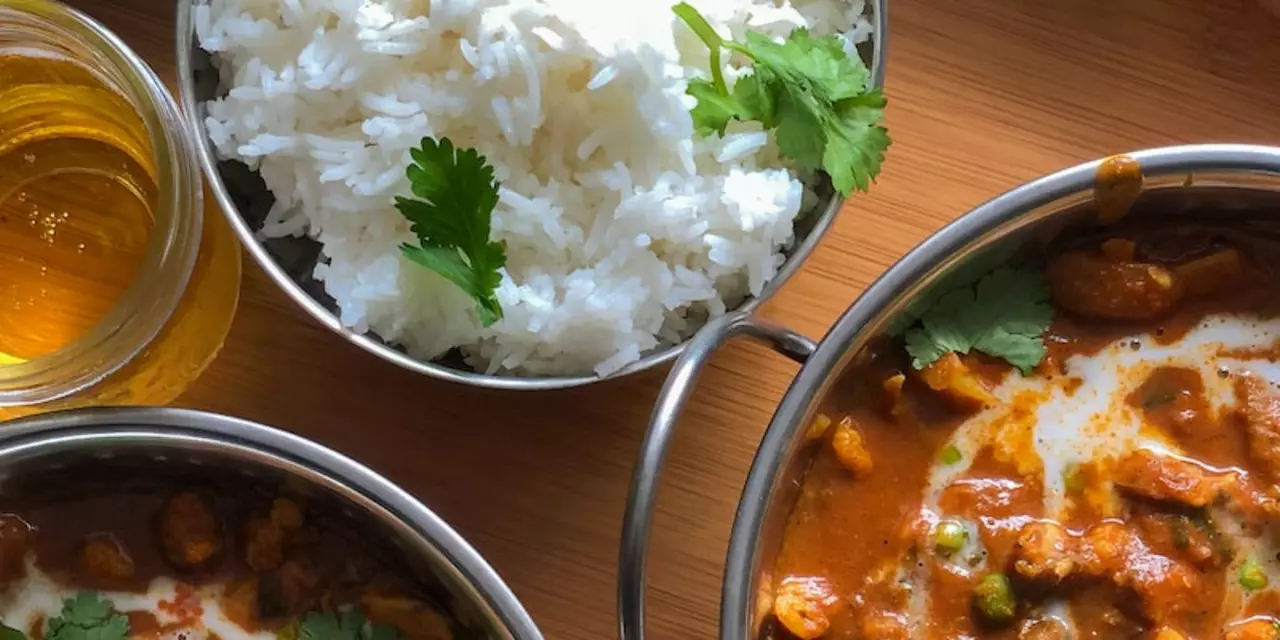Exploring the Unfavorable Image of Indian Cuisine in the United States
In recent years, Indian cuisine has grown in popularity in the United States. However, for many, Indian food still has a negative reputation. It's seen as overly spicy, unfamiliar, and a source of gastrointestinal distress. But why does Indian food have this unfavorable image in the United States?The first reason is a lack of knowledge and understanding of the cuisine. American diners may not know the difference between North Indian and South Indian cuisine, or the subtle differences between regional dishes. This unfamiliarity can lead to a sense of apprehension and a reluctance to try something new.
Another contributing factor is the misconception that all Indian food is spicy. While some dishes can be spicy, many Indian dishes are mild, featuring flavorful herbs and spices. The heat of a dish can be tailored to an individual's taste, but this is not widely known.
Finally, there is the issue of gastrointestinal distress. It is true that many dishes contain ingredients that can be difficult for some people to digest. However, this is true of all cuisines, not just Indian. With the right preparation and cooking, these dishes can be made more digestible and enjoyable.
Indian cuisine has much more to offer than what many Americans think. With a better understanding of the cuisine, and an appreciation for the flavors and complexity of the dishes, this negative reputation can be overcome.
Debunking Misconceptions About Indian Food: Why it Should be Embraced
When most people think of Indian food, they may conjure up images of spicy, heavy dishes that are difficult to digest. This misconception of Indian food has caused it to have a negative reputation in many parts of the world, and particularly in America. But what many people don’t realize is that Indian food is incredibly diverse and can be just as healthy and light as any other cuisine.The spice level of Indian food is often exaggerated. While there are certainly some dishes with high levels of spice, there are also many dishes with mild flavors and none of the burning sensation that some people associate with Indian food. In fact, many of the traditional dishes are made with a combination of spices, herbs, and vegetables that create a savory and complex flavor profile without the heat.
Indian food is also often labeled as unhealthy because of its use of ghee, a type of clarified butter. However, ghee is actually a very healthy cooking fat and is often used to replace oil in dishes. In addition, Indian cuisine features a variety of vegetables and legumes that are high in fiber and nutrients, making it a very healthy option.
It’s time to debunk the misconceptions about Indian food and recognize it for the healthy, flavorful cuisine that it is. There are so many delicious dishes to explore and enjoy, from mild curries to fragrant rice dishes. Everyone should take the time to try Indian food and see why it’s so beloved around the world.
Investigating the Reasons Behind Indian Food’s Unfavorable Reputation in America
When it comes to Indian cuisine, many Americans have a negative opinion of it. While the food is beloved in India, it has yet to attain the same level of global appreciation. In this blog post, we’ll be exploring some of the reasons why Indian food has such an unfavorable reputation in America.First and foremost, many Americans associate Indian food with spice. While Indian dishes are often flavorful, they don’t have to be overwhelmingly spicy. Unfortunately, popular American Indian eateries often serve overly spicy dishes that aren’t representative of the cuisine. This has led to the perception that all Indian food is overly spicy, and has deterred many from trying it.
Second, Americans may be unfamiliar with Indian ingredients and cooking techniques. The abundance of unique spices, herbs and vegetables used in Indian cuisine can be intimidating for those who are unfamiliar with them. Additionally, Indian dishes often require lengthy preparation times, making them less convenient than other cuisines.
Finally, some may be put off by the unfamiliar flavors in Indian cuisine. Indian food can be complex, and its flavors are often distinct from those found in other cuisines. As such, many Americans may not be accustomed to the flavors, and thus may view Indian food in a negative light.
All in all, there are a variety of factors that have contributed to Indian food’s unfavorable reputation in America. From its perceived spiciness to its unfamiliar flavors and ingredients, Indian cuisine has yet to gain the same level of appreciation as other cuisines. Fortunately, more and more Americans are beginning to explore Indian cuisine, and the negative perception of it is slowly changing.
Examining the Reasons for the Unpopularity of Indian Cuisine in the US
Indian cuisine is an ancient and rich tradition that has been around for centuries, yet it has remained relatively unpopular in the United States. There are a few key factors that have prevented Indian food from gaining widespread acceptance in American culture.One of the major reasons why Indian food has a negative reputation in the US is because it is perceived as being overly spicy. American palates are used to a more subtle flavor profile, and the strong spices and complex flavors of Indian dishes can be off-putting to many. Additionally, the use of unfamiliar ingredients such as curry leaves and asafoetida can make Indian cuisine even more intimidating to those who are not used to it.
Another reason why Indian food has a negative reputation in America is because of the perceived lack of variety. Although there is a wide range of Indian dishes available, many Americans are only familiar with the most popular ones such as butter chicken, tandoori chicken, and naan. As a result, Indian food can seem limited and unappealing to some.
Finally, Indian food has gained a negative reputation because of its association with unhealthy eating habits. Many Indian dishes are fried, oily, and laden with rich sauces, which can be unhealthy if eaten in excess. Additionally, some of the more traditional dishes can be difficult to digest, leading to digestion issues and discomfort.
Although Indian cuisine has a negative reputation in the US, there is no denying its rich history and the unique flavors it has to offer. With the right combination of spices, ingredients, and cooking techniques, Indian food can be a delicious and healthy addition to any diet.
How to Change the Negative Perception of Indian Food in America
Many Americans associate Indian food with being spicy, unhealthy, and unfamiliar. To change the negative perception of Indian food in the US, there are a few simple steps that can be taken.First, it’s important to educate Americans about the variety of Indian food available. Most people associate Indian food with curry and naan, but there are so many other delicious dishes that can be enjoyed. From creamy dals to flavorful biryani, there is something to suit every taste. Showcasing the diversity of Indian cuisine can help Americans to appreciate the richness of the food.
Second, restaurants should focus on introducing Indian food in a familiar context. For instance, many Indian dishes are vegetarian or vegan-friendly, so highlighting this aspect of the cuisine can be a great way to draw in customers. Additionally, introducing Indian-inspired dishes like tikka masala tacos or pakora burgers can make Indian food more accessible to those who are unfamiliar with the cuisine.
Finally, it’s important to provide accurate information about the healthfulness of Indian food. Many Americans falsely believe that Indian food is unhealthy, when in fact, it is typically very nutritious. Explaining the health benefits of Indian dishes, such as the high levels of antioxidants, can help to change the perception of Indian food in the US.
By taking these steps, it is possible to change Americans’ negative perceptions of Indian food. With the right education and marketing, Indian food can become a beloved cuisine in the US.



